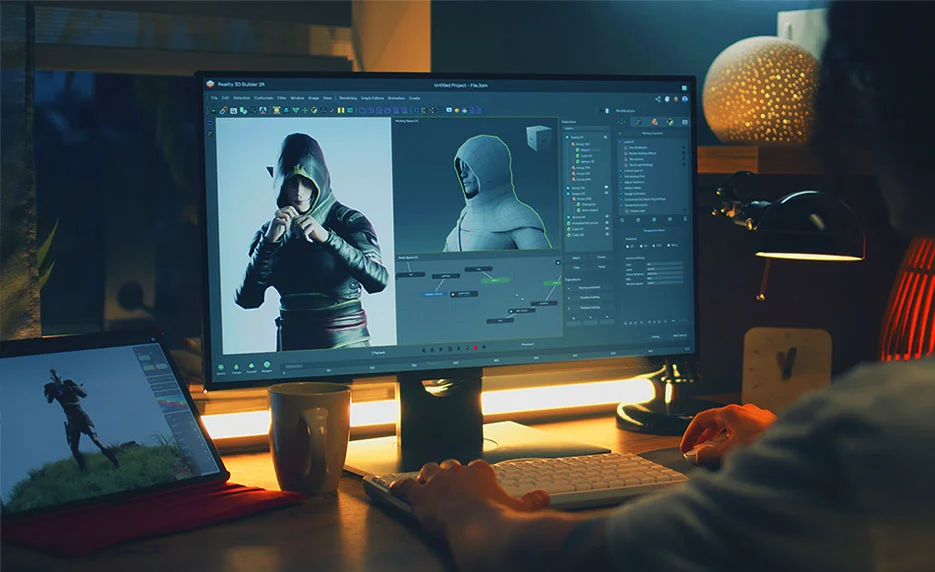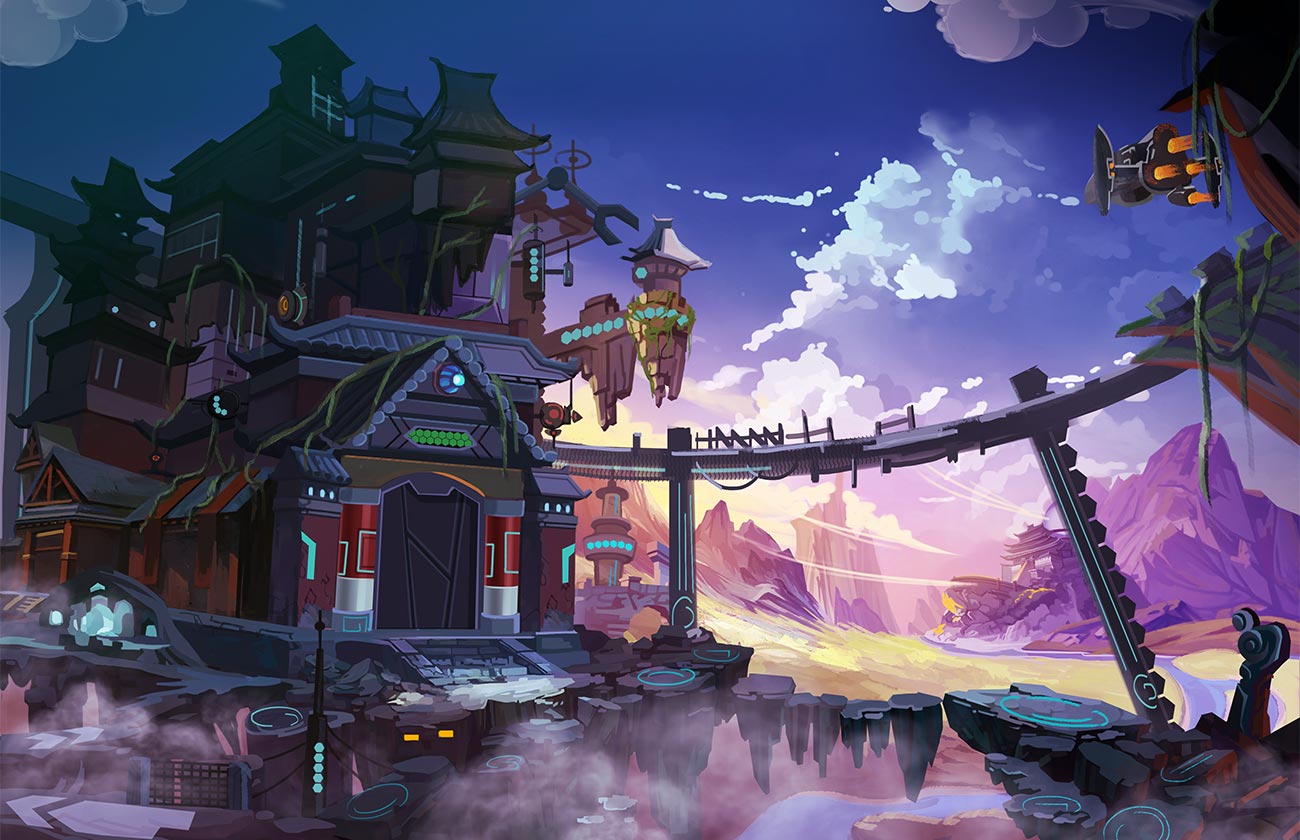
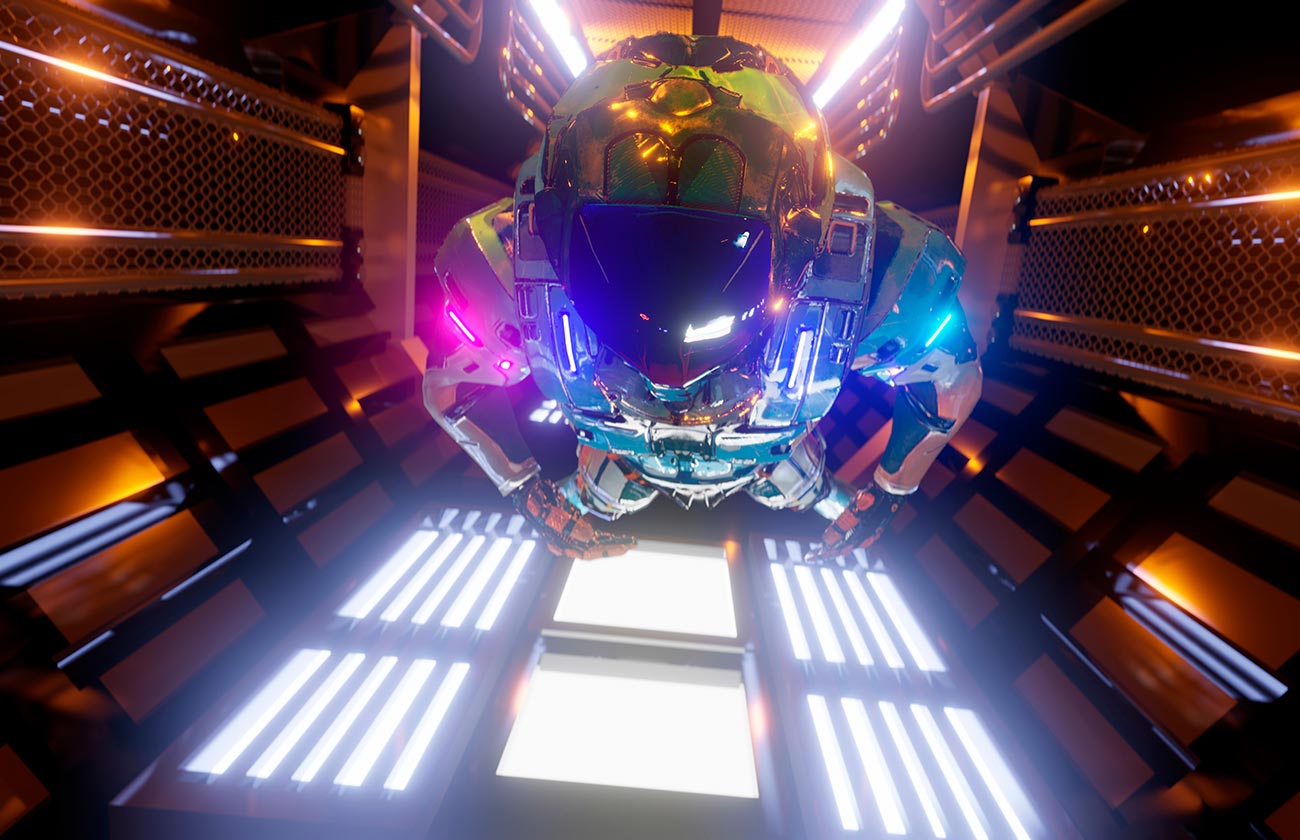
Behind the Scenes: The Art and Science of Game Development
- Introduction
- The Art of Game Development:
- The Science Behind the Scenes:
- Achieving a Balance: Art Meets Science
- Evolving Landscape of Game Development:
- What is Game Development?
- What Does a Game Developer Do?
- Skills Required to Become a Game Developer
- What are the Different Components in Game Development?
- How to Start Learning Game Development?
- What are some Online Resources to Learn Game Development?
- Game Developer’s Roles and Responsibilities:
- Career In Game Development:
- Difference Between Game Developer And Game Programmer:
- Final Thought
The Art of Game Development
- Creating video games is definitely an artistic endeavor. It entails the imaginative process of creating narratives, settings, and characters that emotionally connect with players. To make their ideas come to life, game artists use a variety of methods, including concept art, 3D modeling, and animation. Game creators may take players to new and intriguing regions and evoke sentiments of wonder, excitement, and even nostalgia by meticulously creating visually attractive landscapes.
- Furthermore, narrative is an essential component of game production as an art form. Narrative designers and game writers craft believable characters and complex storylines that gamers will find relatable. When players become completely absorbed in a complex and captivating story, their decisions and actions have a direct bearing on the game’s result. This is where storytelling’s power resides. A game developer’s ability to evoke strong feelings and leave a lasting impression on players can be achieved through engaging storytelling.
- Furthermore, the creative process includes both music composition and sound design. Gamers’ emotions may be evoked, tension can be built, and the environment can be improved with the correct sound effects and music. Sound effects give video games more nuance and complexity. They might range from the soft tread of a figure moving through a creepy home to the massive symphonic symphony that surrounds a pivotal conflict.
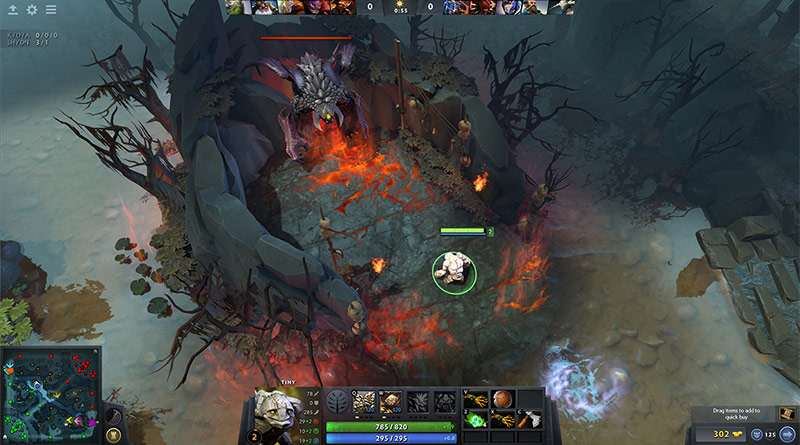
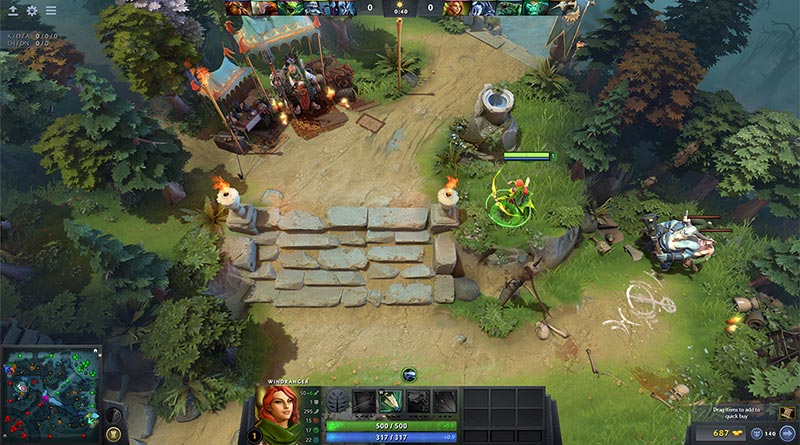
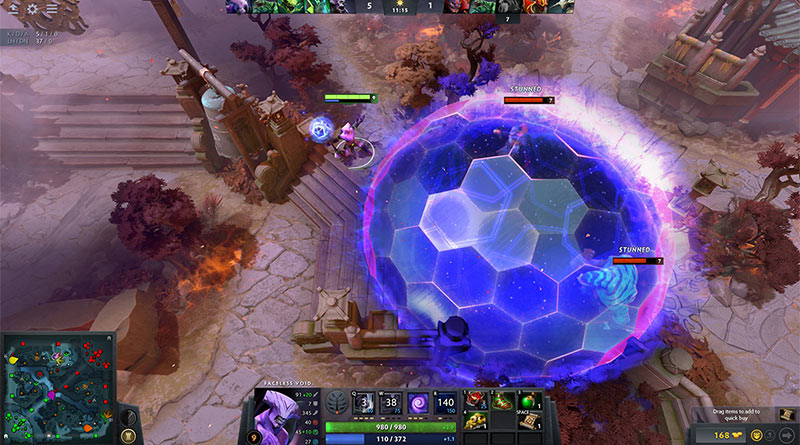
The Science Behind the Scenes
- Although it is undeniably an artistic endeavor, game creation has strong scientific roots. A strong foundation in mathematics, physics, and computer programming is necessary for the technical components of game production. Writing the code that makes a game run smoothly, adding intricate systems like physics and artificial intelligence models, and maintaining gameplay are all the responsibilities of game programmers.
- Additionally, to provide realistic images and engaging experiences, game developers make use of cutting-edge technologies and tools. The frameworks for game development, physics engines, and graphics engines serve as the building blocks for games. With the use of these technologies, game creators may produce breathtaking visual effects, accurate physics simulations, and fluid gameplay dynamics.
- Game creation also depends on data analysis and user input in addition to programming and technology. Developers may learn a great deal about the preferences, behavior, and engagement patterns of players through analytics. Game developers may make well-informed judgements, improve their designs, and produce experiences that appeal to their target audience by using this data-driven method.
Achieving a Balance: Art Meets Science
- The fine balance between art and science is where the real magic in game development is found. The scientific components make sure the game functions properly and offers a pleasurable experience, while the artistic elements stimulate players’ imaginations and emotions. A genuinely immersive and captivating gaming experience is the product of the collaboration between these two fields.
- A productive game development team is made up of programmers, designers, artists, and other experts who work closely together to create a game. Together, their distinct skill sets enable them to produce a beautiful fusion of gripping storylines, fluid gameplay mechanics, and breathtaking visuals.
Evolving Landscape of Game Development:
- Progress in technology and shifting player expectations are driving a steady evolution in the game production industry. Developers are presented with fresh chances to push the frontiers of what is feasible with the emergence of virtual reality, augmented reality, and cloud gaming. The challenges and opportunities presented by these developing technologies provide fresh opportunities for gameplay mechanics and artistic expression.
- A growing emphasis is being placed on portraying a varied range of voices and ideas, and the game industry has become more inclusive and diversified. Games that tackle difficult social topics, delve into many cultures, and give underrepresented people a forum to tell their story have been made possible by this transition.
What is Game Development?
To put it simply, every step of making a video game is called game development. Furthermore, creating a video game is not as simple as playing one, contrary to popular belief. When making a video game, a lot of different elements come together to form a completely new universe, including the story, characters, audio, art, lighting, etc. The publisher, which is a wealthy corporation, finances the process of game development for commercial games, but since independent video games are smaller and less expensive than their commercial counterparts, individuals, like you, can also support them.
What Does a Game Developer Do?
The computer programming required to make a video game function is the responsibility of a game developer. They work to generate captivating gameplay experiences for users by converting the game design’s concept into computer-readable code. Game developers work in tandem with designers, producers, artists, quality analysts, and other members of the production team in addition to writing code.
In order to ensure that players have a seamless experience, they verify the stability of games across platforms. They could also examine the current code and make suggestions for enhancements. They might even transfer whole games or certain parts from one system to another, depending on the circumstances. Video game developers are essential to the creation of video games.
Skills Required to Become a Game Developer:
Here’s how to get the required abilities and become a game developer
Training in computer science or computer programming
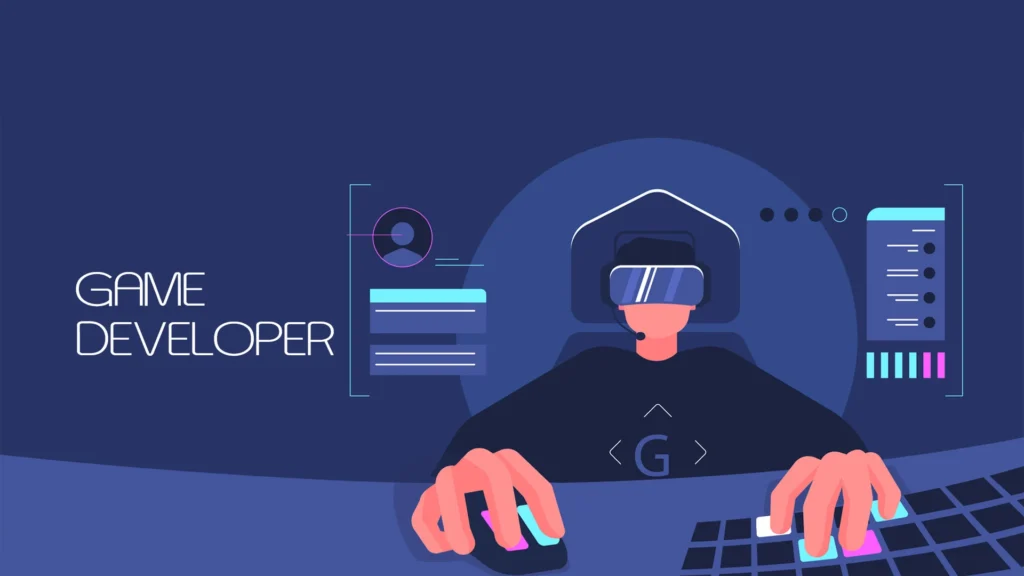
Having computer science or programming training is one of the qualifications for becoming a game developer. Writing code, which is the basis for making video games, is something you will learn to do in this class. Game engines are software applications that power video games, and courses in computer science or programming also teach you how to use them.
Knowledge of 2D and 3D animation software
Having a solid foundation in both 2D and 3D animation tools is essential for becoming a game developer. This will enable you to design the game’s visual components, such as the items, landscape, and characters.
In addition, the game mechanics will require you to be knowledgeable in programming languages like Java and C++. Having knowledge of design programmes like Photoshop and Illustrator is also beneficial because it will help while making game assets.
Knowledge of gaming genres and trends
Understanding the many gaming genres and trends is crucial for game developers. This is something that every company’s job description for a game developer includes. You’ll be able to make prosperous and well-liked games using this assistance.
For example, if you are developing a new action-adventure game, you should know what the current trends in this genre are. This entails figuring out what the needs of the players are for such a game and adding elements that will satisfy them. Likewise, you must stay up to date on the newest design and gameplay trends if you’re creating a puzzle game. through remaining current with the most recent advancements in the gaming sector. You are able to ensure that your games are always at the forefront of development.
Familiar with the game production pipeline process
A developer of video games ought to be knowledgeable about the pipeline used in game production. Pre-, production, and post-production phases are all a part of this process. A game design document detailing the game’s mechanics, plot, and other aspects is created by the game developer during pre-production.
Next, using this paper, a prototype of the game is made in order to assess its viability and get input from possible players. The stage of development where the game is really created is called production. The last stage of production is called post-production, during which any last flaws are fixed and the game is ready for distribution.
Creative problem-solving skills
The difficulties and barriers you face as a game creator are never-ending. Possessing excellent creative problem-solving abilities is crucial for getting over these challenges. To do this, one must possess the ability to solve challenging issues in novel and creative ways.
Additionally, it calls for creative problem-solving and the capacity to view issues from several angles. Adapting swiftly to changes and coming up with fresh solutions to problems are further traits of creative problem-solving abilities.
What are the Different Components in Game Development?
Game development is a vast field with many distinct facets that can be handled by a single genius developer working alone on a game, or more often than not, by a group of people. Therefore, in order to choose the aspects of game development that most interest you, it’s best to first gain an understanding of the numerous components of this subject before getting started.
Story
Video games are no different from everything else in that regard! It’s possible for your tale to have a non-linear structure with multiple plot shifts based on character actions, or a linear framework, which is simpler. The most important thing to remember is that your gamers should be hooked by an engaging story!
Characters
A key component of any video game are the characters. You have to choose the characters’ appearances and personalities, as well as their gaits and other traits.
Audio
It serves as the foundation for video games! It should therefore complement the game without being overtly noticeable! You must choose the different noises in the game environment, such as player sounds, background music, etc., that come together to make the video game realistic and alive.
Art
One might maintain that video games are essentially just forms of responsive art! Therefore, art is crucial since it determines the game’s atmosphere. Video games typically use a variety of artistic elements, such as particle systems to simulate fire, fog, snow, and other effects, as well as textures, lighting, and 3D character and object modeling.
Lighting
Video game lighting is all plainly fake, yet it’s crucial for creating the right atmosphere. Increased illumination can indicate more adventurous or enjoyable games, whereas less lighting can be associated with horror or thriller games. Furthermore, as characters can find cover in darker regions, lighting can play a significant role in stealth challenges.
Levels
Every decent video game has multiple stages that get harder over time. Depending on the game you’re playing, a level may be represented by several floors, distinct buildings, or even separate nations. and there are numerous possible routes that can travel from one level to the next in each. And a key component of game development is creating games with a large number of possible path variations for various stages.
How to Start Learning Game Development?
The topics listed below act as a roadmap to help you understand the fundamentals of learning game development now that you are aware of every aspect of the field. You can create a passable game after mastering these, and as you advance, you can create increasingly complex universes.
Learn Computer Programming
Computer programming is used to build the intriguing world-view in games. Therefore, it makes sense that if you want to succeed in this world, you need to know programming! It would be excellent if you could code in any of the more common programming languages, such as Python, C++, C#, Java, etc., but if not, it would be better to learn programming before continuing.
There isn’t a single programming language utilized only in the game development industry. However, the most widely used language for creating game engines is C++, which is also the most popular in the field of game creation. Popular C++ games include World of Warcraft, King Quest, Counter-Strike, and others. Java is a popular language as well since it supports sockets and multithreading. One well-known Java game is Angry Birds Chrome.
Choose a known Game Engine
It is recommended to begin with a well-known game engine because you are a novice in the field of game development. They offer a variety of features for your games, including networking, artificial intelligence, collision detection, animation, 3D and 2D graphics rendering, and animation. As a whole, they are quite helpful. Unity is the most widely used game engine since it is very simple to use and offers a free personal version! Unreal Engine is another well-liked gaming engine that can be customized to make original games. But in the end, it doesn’t really matter whatever game engine you use—what matters is that you stick with it long enough to have sufficient knowledge of it to apply it to other projects. It should be noted that using a game engine is not necessary. Actually, if you choose not to use a game engine, you will have to handle the majority of the technical work yourself. This can be challenging, but it will present several learning possibilities. You can also utilize it in the future if you need to create the design patterns for game programming yourself!
Create a Basic Game
Now that you have a fundamental understanding of game development, make a simple game. I know you want to start modest and not get carried away by creating a masterpiece, but trust me! It’s best to give your project a week or so, as understanding the fundamentals is more vital right now than becoming an instant expert. Tetris is a popular choice for an introduction to game development because it’s simple to create and covers a lot of ground. Essentially, it will instruct you on the three phases of the game loop, which are initialize, update, and draw. These procedures are fundamental to all future game programming that you may undertake. In the event that Tetris isn’t your thing, though, you are free to choose any game that is sufficiently simple (or challenging—you have the freedom to choose!). But make sure the game has a clear goal and conclusion, and that it’s not overly complex or unclear.
Understand Game Design Patterns
If you have a basic understanding of video game development, Game Design Patterns is where things become a little more involved. What are game design patterns, though, is the first query to consider. In an imaginary space video game, let’s say you have to add several asteroids that blow up a spacecraft. Instead of concentrating on individual asteroids in this case, it would be far more prudent to create a code module that can be repeatedly utilized for the asteroids. We’re talking about object pooling, a game design pattern. Similar to this, there are a tonne of Game Design Patterns that are essentially just templates for writing modular code that can be applied again to solve any issue that arises throughout the design of a game. Additional common Game Design Patterns include Flyweight, Prototype, Observer, and so on. It’s better if you comprehend these game patterns first, then use them in a variety of minigames. You will gain a better knowledge of the different effects and advantages that Game Design Patterns can have on the field of game development as a whole from this.
Learn 3D Graphics and Associated Maths
You must now become familiar with graphics because it is impossible to create a video game without them. Even though 2D graphics were quite popular in the middle of the 1990s, the majority of well-known games nowadays require 3D graphics, which can be displayed in Fixed 3D, First-person perspective, Third-person perspective, etc. to give the game a realistic feel. Therefore, you should be familiar with computer graphics and the mathematics that underpin them if you want to become a top-tier game programmer. If you do not intend to use an existing game engine, this becomes even more crucial. Linear algebra, which focuses on linear equations, matrices, vectors, etc., is a type of mathematics that is frequently used for 3D graphics. Gaining control over the 3D environment of your game to produce amazing effects is simple if you grasp these ideas!
What are some Online Resources to Learn Game Development?
You can learn a variety of things about game development from the many books, classes, articles, etc. that are available online. Nonetheless, some of the well-liked resources are offered here for your comfort:
- The Art of Game Design: A Book of Lenses by Jesse Schell is a well-liked resource for studying the fundamentals of game design. The secret to successful game design, which this book will teach you, is to see your video game through a variety of lenses or perspectives.
- The Introduction to Game Development course on Coursera, provided by Michigan State University, is the best option if you’re looking for an online game development education. Calarts offers an additional course of this kind called Introduction to Game Design.
- For those who want to concentrate only on Unity, there is a course on Udemy called Unity Game Development Build 2D & 3D Games.
- You can visit Gamasutra: The Art & Business of Making Games, a website that essentially does what it says, for free articles and fascinating information on game development!
Game Developer’s Roles and Responsibilities
It’s likely that you now have a basic understanding of how to acquire the required abilities to work as a game developer. Now let’s talk about some essential tasks and obligations that game developers must fulfill on behalf of players in order to guarantee the success of a project.
Ideation and Conceptualization
Coming up with the basic concept for your game is where it all starts. It’s crucial to start developing a concept once you have one by asking yourself vital questions like “What kind of gameplay experience do I want to create?” and “Who is my target audience?” among others.
Game Design
It’s time to get into game design after you have a strong concept. This covers every aspect, from fine-tuning the gaming mechanics to designing captivating level designs.
Art and Asset Creation
You must produce excellent art assets if you want your game to have the finest possible look and feel. This covers all of it, from background scenery to user interface components to 2D sprites and 3D models.
Programming
You will need to spend some time developing your game if you want it to function as intended. It’s crucial to have at least a fundamental understanding of popular programming languages like C# or UnityScript because this is frequently one of the most technical parts of game production.
Testing
Testing should begin as soon as your game is in a playable build. In order to work out any issues or glitches, you should playtest your game internally as well as conduct external beta tests with larger player bases.
Marketing
You must have a strong marketing plan if you hope to entice users to play your game. Generating a stir on social media and interacting with the media and influential people in the gaming industry.
Release
Now is the perfect moment to publish your game online after all of your hard work! However, your effort does not end when your game is out.
Updates and Patches
It is your responsibility to ensure that your game receives frequent updates and patches after it goes live. This could entail updating your game to reflect the most recent platform changes, adding new features or content, or addressing issues.
Player Feedback
Listening to user input and incorporating it into your game over time is one of the most crucial parts of post-release maintenance. Incorporating player input into your game’s future updates is crucial, whether you’re gathering information through in-game statistics or reading online reviews.
Career In Game Development
A career in game creation can take many distinct forms, including those of a visual artist, game designer, developer, animator, tester, interpreter, translator, etc. The audio engineer’s position is a crucial one, nevertheless. Video game sound effects are created and altered by audio engineers. This can involve anything from recording music and dialogue to producing creative sound effects. Technical knowledge of sound mixing and editing, as well as editorial prowess, are essential for audio engineers.
The position of game artist is another crucial one in the creation of video games. The visual style of a video game is made by game artists. This covers the creation of the people, settings, and items that players will interact with while playing. In addition to having a solid grasp of popular 3D modeling tools, game artists need to be proficient illustrators and painters.
Those who are interested about the differences between game developers and programmers may find this information interesting. The overall ideas and gameplay mechanics of video games are created by game designers. Conversely, it is the job of game programmers to take those designs and translate them into functional code.
Difference Between Game Developer And Game Programmer
Some ask if there is a distinction between a game designer and a game developer. A game developer is in charge of a game’s entire creative vision, from conception to realization. The game setting, characters, and gameplay are all created by them in collaboration with a group of designers, illustrators, and programmers.
The code necessary for the game to function is written by a game programmer. To build features, enhance performance, and fix bugs, they collaborate closely with the development team. Although each job is crucial to the outcome of a game, they call for distinct abilities and expertise.
Programmers, for instance, must be experts in coding languages and architectural design, whereas developers must possess a solid grasp of design theory and player psychology.
Final Thought
It takes a sophisticated fusion of science and art to create a game. A thorough grasp of both the artistic and technical facets of the profession is necessary for game developers. Through the utilization of art, game developers are able to produce visually striking environments and captivating storylines that captivate players. Simultaneously, gamers are guaranteed a smooth and pleasurable gaming experience by the science operating behind the scenes.
For both developers and players, this is an exciting time as the game development industry continues to change. Numerous opportunities for creativity and innovation are presented by emerging technologies and shifting player expectations. Through a commitment to both the art and science of game development, we can keep pushing the envelope and producing captivating and inspiring gaming experiences.
Together, the science and art of game production weave an intricate web that enthralls players and pushes the envelope of what is conceivable in the digital world. The magic that occurs behind the scenes of game creation is a result of the combined efforts of many talented individuals, from the first inspiration to the last release. The future holds even more amazing gaming experiences for players to discover and savor as creativity soars and technology advances.




